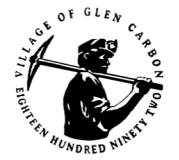As we prepare to settle into summer when the importance of taking action to help keep the air clean is at an all-time high, we’re continuing to recognize local businesses and organizations that have gone to measurable lengths to reduce environmental impact through their participation in the St. Louis Green Business Challenge. Like the Clean Air Partnership, Forest Park Forever is proud to keep sustainability and conservation at the forefront of their work, and this month, we’re thrilled to shine a spotlight on the organization for their commitment to make clean air a priority throughout their business practices.
A private nonprofit conservancy, Forest Park Forever has spent the last 34 years working to restore, maintain and sustain Forest Park as one of the nation’s greatest urban public parks, in partnership with the City of St. Louis and the Department of Parks, Recreation and Forestry. In the 2019 Challenge, Forest Park Forever received the Star Circle of Excellence Achievement Award and secured the second place title at the Leader Level – Owner Category for having the greatest gain from their baseline to final point totals.
From identifying strategic sustainability wins within restoration projects to encouraging today’s youth to connect to nature, Forest Park Forever considers this work vital to their mission and the future well-being of Forest Park and all green spaces. The organization has led major fundraising efforts to restore many landmark destinations in Forest Park, such as the Emerson Grand Basin, the Boathouse and the Jewel Box, including securing $139 million for Park restoration projects and an expanded endowment. Along with preservation of the park, they also provide information and guides for its 13 million annual visitors, as well as an array of educational opportunities for all ages.
Among Forest Park Forever’s impressive accomplishments to receive recognition in the Challenge is construction on the Forest Park East Waterways project, which is designed to enhance water quality, biodiversity, fishing habitat and access. Working with the Metropolitan St. Louis Sewer District (MSD), the project will remove thousands of gallons of water from the stormwater system. Late last year, Forest Park Forever also installed an 11,500-watt solar array to power the organization’s shop building. The new unit is expected to supply 40% of the building’s energy and yield about $1,200 in annual electrical savings!
Other noteworthy innovations include the construction of Forest Park’s new Nature Playscape, which is scheduled for completion later this year. The experiential Playscape will transform 17 acres of turf grass into family activity areas inspired by the region’s natural landscapes. Children will be able to explore eight natural activity areas including a meadow, spring, bottomlands and more. Adding hundreds of majority native trees and plants will help to improve the region’s air quality and reconnect families with nature, all while continuing Forest Park Forever’s work to restore sustainable landscapes.
To learn more about the link between sustainability and air quality, explore our website, like us on Facebook or follow us on Twitter at @gatewaycleanair. For additional information on the sustainable efforts underway by Forest Park Forever and how your company can get involved in the St. Louis Green Business Challenge, subscribe to the bi-monthly E-Newsletter or visit www.stlouisgreenchallenge.com.




